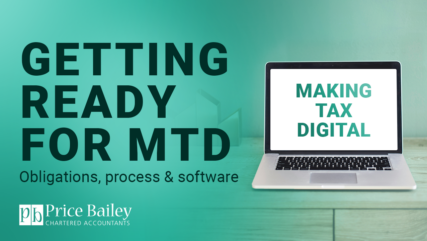
Time for a financial check-up: how GPs can prepare ahead of the Budget
This article looks at the practical steps GPs can take now to prepare for the Chancellor’s announcements and strengthen their financial position.
Purchase Price Allocation (PPA) is the process of attributing value to specific assets and liabilities of a business following an acquisition. Historically, when acquirers paid more for a business than the value of its net assets, the excess was recognised as ‘goodwill’. However, as accounting standards have evolved to become increasingly specific, rather than leaving a broad ‘goodwill’ figure, a PPA exercise is undertaken to split this value across various identifiable assets.
The breakdown of value helps to provide greater transparency in the reporting of goodwill and helps those using an acquirer’s financial statements to understand where the true value of an acquired business lies. The result is that, while goodwill normally still appears on the balance sheet, it’s now supported by a clearer understanding of the underlying assets contributing to the price paid for the target.
First and foremost, PPA is essential for financial reporting purposes. It is a required step for any acquisition, in accordance with UK reporting standards such as FRS 102 and IFRS 3.
Its benefits extend beyond accounting, it also helps businesses understand where value lies in an acquisition. For buyers, it’s crucial to answer the question: “We’ve paid this much for the business – how much of this is attributed to non-physical assets?”. This insight can be valuable for shaping decisions moving forward, such as investment priorities, post-acquisition integration plans and longer-term growth plans.
A PPA will start with an assessment of the target’s historic financial statements and related commercial documents, along with conversations with the acquirer’s and target’s management teams, to provide an initial view of the factors driving value in the target business.
This analysis will help to identify the value attributable to particular factors, in addition to helping buyers gain a clearer understanding of the stability and long-term potential of these intangible assets, which can help mitigate risks and uncover opportunities for future growth.
Failing to conduct PPA properly can have significant implications, particularly for financial reporting. The most immediate consequence is the risk of inaccurate financial statements. For businesses presenting their accounts to external investors, financiers, or regulatory bodies, this can result in non-compliance with financial reporting standards such as FRS 102 or IFRS 3 and could mean that an acquirer breaches the terms of funding arrangements or investment agreements. Inaccurate reporting undermines the confidence of those who rely on these statements to make informed decisions.
At Price Bailey, we understand the importance of PPA in maintaining trust and meeting reporting requirements. Considered allocations demonstrate transparency and reinforces the confidence in the accuracy and reliability of the company’s accounts.
We also recognise that there are mixed responses to the need for a PPA. We are practical advisors who understand what the theory is meant to deliver in practice and can therefore take a sensible, informed and robust approach to making sure that appropriate conclusions are drawn quickly and practically.
The process of undertaking a PPA for most business has some common steps. However, there is always an element of tailoring to the complexity of each business.
The first step is an in-depth investigation into the business, the transaction itself, and the assets that makeup the goodwill balance. This involves detailed conversations with the management team of the acquirer and the target to identify where they consider that the value lies and uncover potential opportunities stemming from the acquisition, although we do not attribute value to these opportunities, only to existing assets.
For example, if we are valuing customer relationships, we will review customer contracts and analyse historical data. If the focus is on software, then our team collaborates with developers and technology leads to understand its unique value, including what it allows the company to do and the insight the software provides.
This is an important step to ensure we capture every nuance of the business and its assets.
Once the initial analysis and discussions are complete, we apply robust valuation methodologies, primarily based on forecasts and discounted cash-flow valuations. Our team will benchmark the output of these valuation methodologies against industry standards and data (where possible) to ensure alignment with similar businesses, providing you with a valuation you can trust.
Whether it’s determining the of intellectual property, or another intangible asset, our valuations are comprehensive and tailored to reflect the true economic benefits of the acquisition.
Once an appropriate valuation methodology has been chosen, we will work closely with the management team to understand the specific economic benefits related to the asset over different periods of time. Our collaborative approach means you’re involved at every step, and all assumptions are reviewed for accuracy and reasonableness.
The outcome forms part of a clear and detailed valuation report that helps the management team to meet its financial reporting obligations and provide insight into the value drivers of the acquisition.
Our professional opinion helps to support our clients in the presentation of the PPA to the company’s auditors. It is a normal part of our engagement to support the management team in dealing with queries proposed by the auditors and to help provide a suitable level of evidence to substantiate the PPA.
Auditors often have routine queries about the sources and evidence behind PPA valuations, ensuring everything aligns within their files. We think of this as an opportunity to demonstrate the transparency of the valuation work, and this is where having our support makes a real difference.
We can provide valuable support to your finance team, saving valuable time and capacity. Our detailed valuation reports provide clear evidence and thorough explanations for each step.
With us as your valuation experts, you can approach the audit process with confidence, knowing that the PPA is handled professionally and backed by robust analysis and methodologies.
The process normally takes approximately 4 weeks.
You’ll need to provide access to historical records, including those associated with customer relationships if these are being valued. This typically includes data from the past few years to assess trends and stability.
You’ll also need to compile intellectual property (IP) documents, such as patents and trademarks, including their renewal dates and an assessment of the benefits they bring to the business. Additionally, information on design assets, such as logos, may be required to evaluate their contribution to overall value.
Developing appropriate forecasts and business plans can help to support the long-term assessment of value.
Contact us today to find out more about how we can help you

This article looks at the practical steps GPs can take now to prepare for the Chancellor’s announcements and strengthen their financial position.

Our latest webinar, 'Getting ready for MTD – obligations, process and software', is now available on demand!

In this blog, we explore cricketers’ tax planning, career choices and long-term finances, and how investors and franchise owners are thinking about value, risk and the future of the sport.

Although awareness around men’s mental health is growing, there remains a significant gap between how men perceive their own mental health and the reality of the challenges they face. Why does this disparity exist?